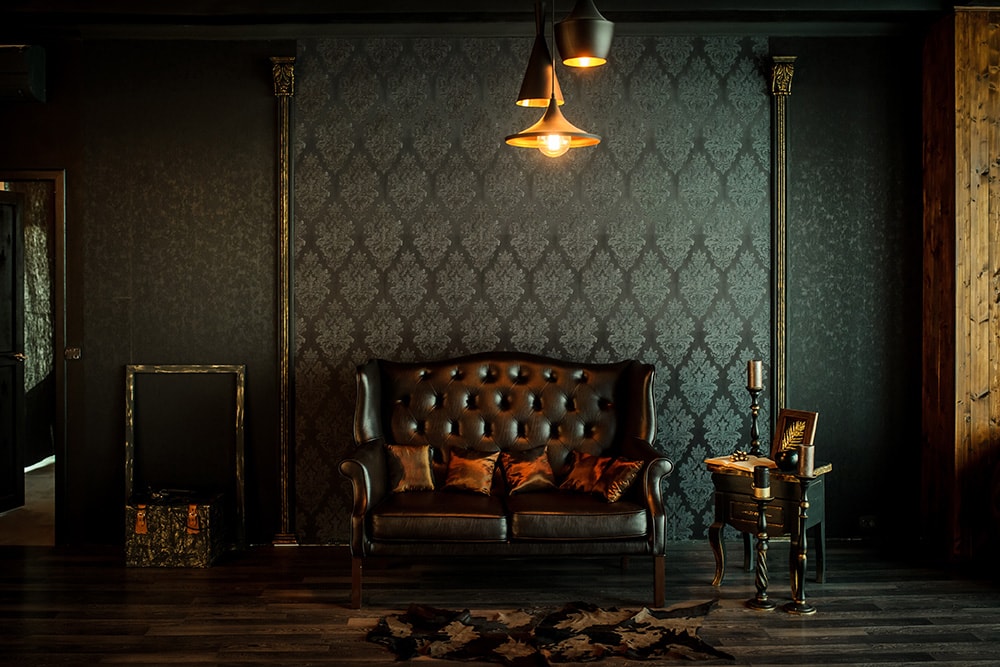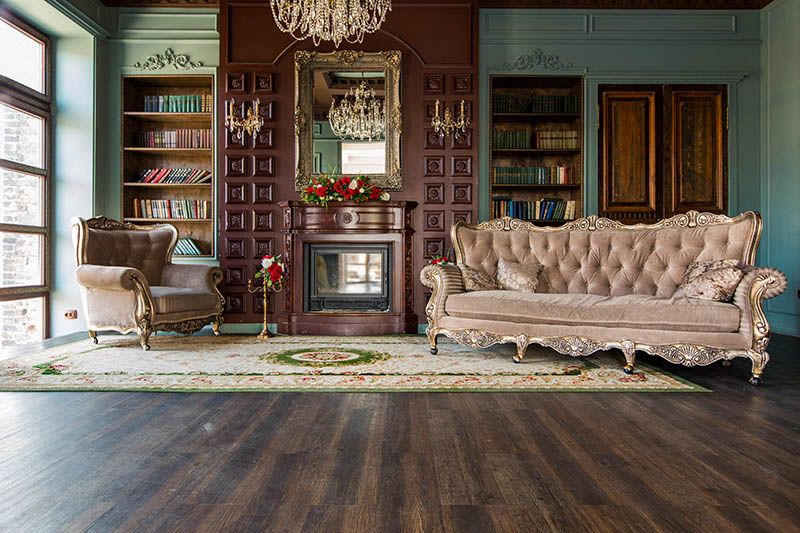15 Vintage Interior Design Ideas (with Pictures)
-
Grant Piper
- Last updated:

Vintage design is funky and diverse. There are multiple ways to embrace vintage design elements in your home. Vintage is a great contrast to modern design, and it is extremely popular. There are numerous different eras and movements of vintage design, and knowing where to start can be daunting. The best thing to do is find some vintage inspiration that speaks to you and then decide on an overall vision for your space. Here are 15 vintage interior design ideas to inspire your next project, including tips and the history behind some of these elements.
Top 15 Vintage Interior Design Ideas
1. Choose Your Vintage Era
One way to bring cohesion to a home is to pick a single vintage era and stick to it. There are multiple different eras and flavors of vintage design, including things like Art Nouveau, Art Deco, Mid-Century, and even late Victorian. Today, some people also consider things like Pop Art and 60s and 70s psychedelic to be vintage. This diversity gives you plenty of flexibility. That flexibility can be good, but it can also be problematic if you don’t have a singular vision for your design. If you don’t pick a direction to go in, you could end up with an unplanned mishmash of different styles that won’t always feel cohesive.
2. Utilize Wood Flooring in Primary Areas
Wood flooring was king in old homes. There were no luxury vinyl planks or wood-look tiles, there were only authentic hardwoods. If possible, you should utilize real wood floors in a space that is going for an authentic vintage look. Bonus points if you can repurpose, refinish, or expose existing wood floors. Many older homes have wood floors hiding, often under carpet or tile, that you might be able to find and use. Wood floors can come in all sorts of different hues and variations, from knotty pine floors to dark, moody wood planks.
3. Source Real Vintage Lighting
One of the best ways to make your vintage design feel personal and authentic is to find real antique lighting to dress up the space. Lighting was very important in vintage designs, and finding real pieces to install in your home can take your design to the next level. Antique lighting can include everything from elaborate chandeliers to table lamps and standing lamps. Lamps were used in conjunction with other more traditional styles more than they are in a modern design. Finding real vintage lamps from an era you have in mind can add a lot to a space.
4. Embrace Textiles
Many vintage designs include a lot of textiles in them. Textiles include things like rugs, curtains, and tablecloths. Many vintage designs also had upholstered furniture like lounge chairs, couches, and dining room chairs. Textiles serve two purposes in a vintage design. First, it adds texture to a space that can quickly become flat and sterile. Second, they are usually functional. Vintage designs didn’t use things like blinds, so textile pieces were functional in addition to stylish. Furniture was often hard and made from stiff wood and plastic, so textiles made furniture softer and more comfortable. If you want to elevate your vintage decor, you should consider adding textiles into your design, focusing on functionality and texture.
5. Appreciate Pleasant Pastels

Pastel colors make their way into a variety of different vintage flavors. Pastels were prominent in turn-of-the-century designs, mid-century designs, and Art Deco designs. Pastel colors can be incorporated on the walls, but they can also be used in kitchen appliances or bathroom tiles. A bright pastel dining room and a colorful tiled bathroom were hallmarks of vintage homes. The pastels should be eye-catching but subtle. They aren’t as bold as some of the modern pallets being used today, but they are still very effective.
6. Find Antique Furniture

Antique furniture is a great way to make a space feel truly vintage. There is no substitute for real furniture from a previous era. Antique furniture is often timeless and can fit a variety of different design visions. Antique furniture does not have to be super large, heavy, or dark; it can include light and airy mid-century or art deco pieces as well. It is also important to note that vintage homes in the 1940s and 1950s would often have old pieces from the homeowner’s parents that dated to the turn of the century or 19th century. Authentic antique furniture can transport you directly into the past for a groovy vintage feeling.
7. Incorporate Unique Antique Pieces
In addition to furniture, you can also look to incorporate other antique pieces. Vintage artwork can be put on the walls, vintage throw pillows can dress up a living room, and vintage utensils, appliances, or storage can help finish out a design and tie everything together. Vintage countertop containers or a period mirror can add that last little bit of flavor that you need to make a room feel truly vintage. It can be fun to keep an eye out for pieces like this at junk shops, thrift stores, and antique stores. The perfect vintage piece is out there, just waiting to be found.
8. Use the Natural Architecture of the House
One way to make a home feel vintage is to use the existing architectural features in a natural way. Many older homes have authentic features like exposed brick, raw wood beams, and funky corners. Don’t cover up these features. Dress them up instead. Many new homes today are lacking in a lot of the architectural character found in older homes. If your home has some of this character naturally, you should lean into it. Using a natural architectural feature of the home in conjunction with vintage wall art can create a stunning space without breaking the bank.
9. Mix Old and New

If you want to go with a vintage design, you don’t have to strip out all of the modern amenities and touches that you enjoy today. You can mix and match vintage with modern for a unique and eclectic look. Not everyone wants to put their flatscreen TV into storage to adhere to an authentic vintage design. Instead, you can dress up modern features in your home with vintage touches. Don’t be afraid to mix and match modern and vintage elements such as furniture, colors, and pieces. Some themes like Art Deco and Mid-Century Modern will blend seamlessly with modern designs.
10. Simplify the Bathroom
Vintage bathrooms were much simpler than they are today. They were smaller, simpler, and more colorful. Vintage bathrooms did not have large soaking tubs, massive wet rooms, rain showers, or multiple vanities. They were focused on being efficient and effective. If you are looking to redo your home in a vintage style and have an older bathroom, you don’t need to gut it. Lean into the smaller and simpler bathrooms from previous eras.
11. Incorporate Books into Your Design
Vintage homes often displayed books more prominently than modern homes. Vintage homes didn’t have televisions, computers, and surround sound to provide entertainment. They had books, magazines, and posters instead. Vintage homes would usually have an office, study, or library that was filled with books. Books were also used on exposed shelves or built-ins. If you can use vintage books that were bound in leather, it will only add to the look, but there are multiple ways to incorporate books into your designs. Books can fit well in living rooms, bedrooms, offices, and more.
12. Chunk Up the Bedroom
Vintage bedrooms had more volume than modern bedrooms. Modern bedrooms are very bright and minimalist. Vintage bedrooms were headier. They had large four poster beds, thick drapes to keep light out, and multiple pieces of sturdy furniture. A vintage bedroom is fuller in multiple different ways than a modern bedroom. Vintage rooms would also feature specific pieces of furniture like large mirrors or a makeup stand, usually made from wood. To make your bedroom feel vintage, add volume, girth, and character.
13. Try a Travel Aesthetic
One way that people used to decorate their homes was with travel elements. Old suitcases and trunks were stored in prominent visible areas. People didn’t have digital photos or even cameras a lot of the time, so they had to make do with souvenirs as keepsakes. Postcards, license plates, and stickers were used to add personal flavor to a space. Maps were also used to give a room a sense of place and purpose. Old vintage maps are a great piece of decor that can fit into a variety of different vintage rooms.
14. Mix and Match Vintage Styles
Although sticking to a singular vintage era can bring cohesion, don’t be afraid to mix and match vintage styles if you think you can create a cohesive look that way. There are multiple different flavors of vintage, giving you the freedom to choose which styles speak to you. You do not have to get locked into a single vintage era. If you like Victorian trim and dark furniture but also like the funky colors of the turn of the century, don’t be afraid to combine these elements. Since vintage is a broad term, you have more freedom to explore and tweak your style in a variety of different ways. You have more freedom with vintage than you do with, say, mid-century modern. Just be careful not to drift too far into kitschy (though some would consider kitschy to be its own flavor of vintage).
15. Don’t Forget the Rug
Most vintage homes had rugs in them. There were rugs in nearly every room, including places where modern homes usually don’t feature rugs, such as the kitchen or bathroom. The reason for this was back in the day, homes were poorly insulated and used wood flooring and tile throughout, which were often cold underfoot. Adding a large intricate Persian rug or a simple kitchen runner can add a pop of color, texture, and vintage elegance to a space. Most vintage spaces will include a rug of some sort, and it is up to you to decide whether you want a rug to fill the whole space or some smaller complimentary rugs throughout.
Conclusion
These vintage interior design ideas are sure to inspire your next project. Whether you want to go for turn-of-the-century glam or a combination of mid-century modern and contemporary modern, there are ideas here that will work for nearly any home. Every room can be turned into a vintage space with a little imagination and some planning. These tips and ideas will help steer you toward your next big decorating project.
Featured Image Credit: Med Photo Studio, Shutterstock
Contents
